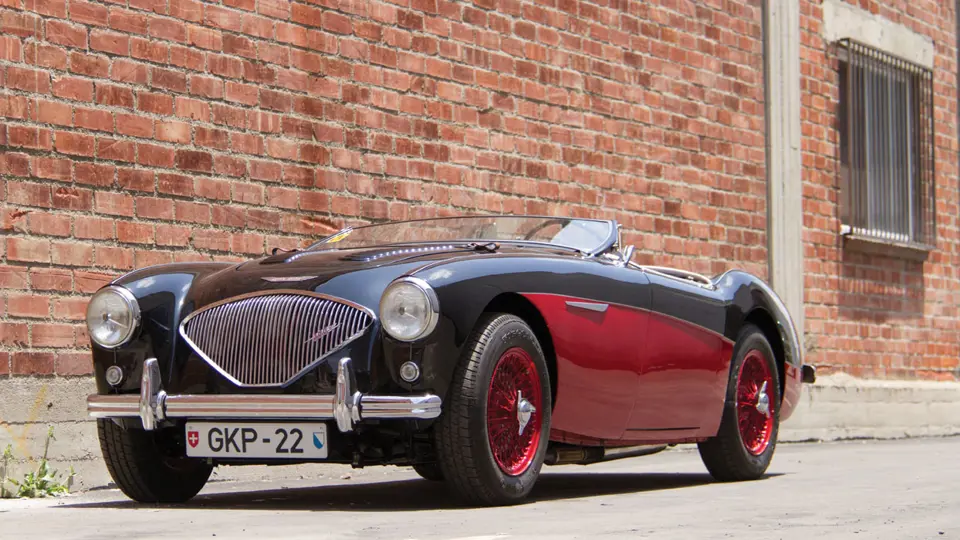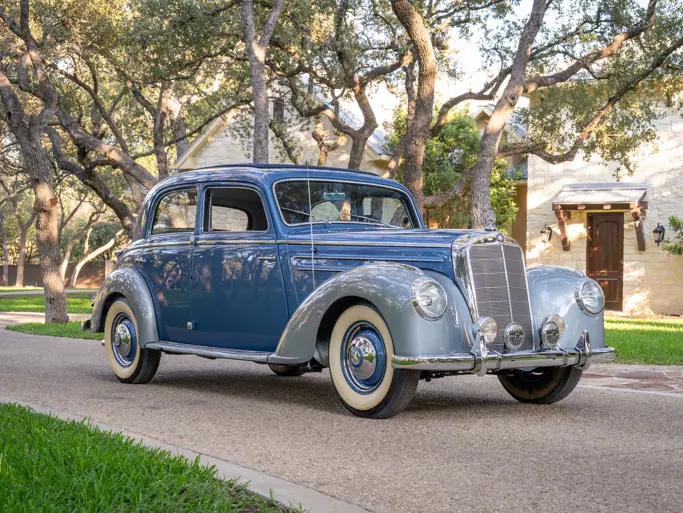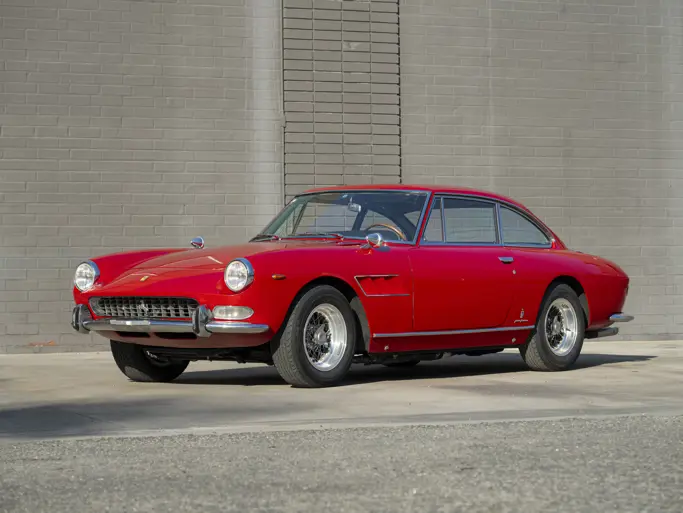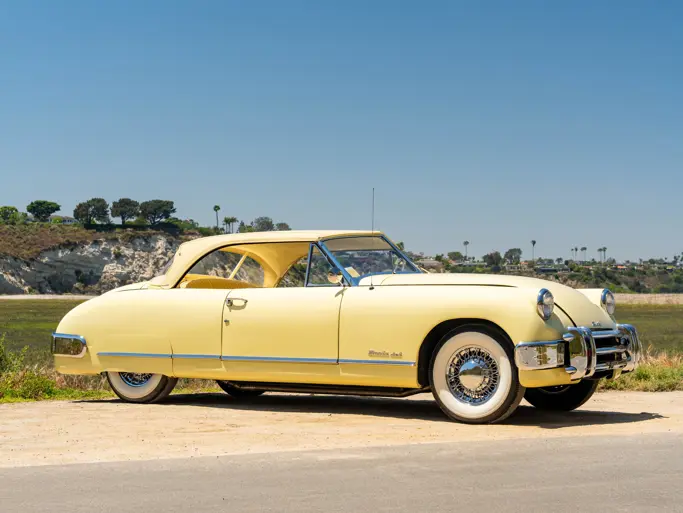 | Santa Monica, California
| Santa Monica, California
In the early 1950s, former British rally driver Donald Healey looked for a new automobile to build. Using his own talents, he cooked up a car that borrowed the powertrain of Austin’s quirky A90 Atlantic—a 2,660 cubic centimeter, four-cylinder unit that had four overhead valves and 90 brake horsepower—and new sporting bodywork in the Triumph or MG mold. This car was badged as the Healey Hundred, and it was displayed at the 1952 Earls Court Motor Show, entrancing Austin Chairman Leonard Lord, who immediately struck a deal for his company to build it as the Austin-Healey.
As a car that was developed by a racing driver, the Austin-Healey was capable of everything that its designers had intended it to do. Healey, for instance, took one that was only lightly modified to the Bonneville Salt Flats in 1953, and he proceeded to set a number of speed and endurance records, with a recorded top speed of 142.636-mph. “It’s fast! It’s dependable! It’s record breaking!” ads screamed.
After building more than 10,000 BN1s in three years, more than half of which were exported to the United States, Austin introduced a new Healey, known as the BN2, for 1955. This car featured a four-speed transmission and was offered both in standard trim and as a new “hot” model, the 100 M ‘Le Mans'. This model adopted larger carburetors, a high-lift cam, higher 8.1:1 compression, stiffer front suspension, and a louvered hood, which was secured by a leather strap. These engine modifications, with the exception of the high-compression pistons, could also be dealer-installed as the Le Mans kit, and were also available at the parts counter for owner application. True factory-built 100M Le Mans Competition Roadsters accounted for only 640 cars, which are all tracked and documented by a dedicated registry and the British Motor Industry Heritage Trust.
This car was previously documented by a BMIHT Certificate as being one of the 640 100 Ms. With the current importance being placed on the provenance of these cars some issues must be noted. While the car has the chassis and body number plates on the firewall some other numbers are missing. Currently it sports a new hood; however the original hood with the correct body number has been reunited with the car; the bootlid bracket is not original, so there is no number found; the numbers on each carburetor are correct, but they do not have any hand-etched numbers; the distributor number is correct; the ignition switch faceplate is correct; the left-hand bent brace by the airbox was cut off during its restoration; the engine plate riveted to the block is missing; it doesn’t have the correct intake manifolds and the cockpit surround pieces are numbered as follows: two door pieces are numbered 7066, dash pieces are numbered 2048 and the rear piece is numbered 14156.
It is still thought that this is one of the factory-built examples and it has been forwarded by those in the know that this is “a good car, but not a great car.” It is accompanied by a selection of documentation from earlier owners, who provided detailed information on its restoration. It was originally built with left-hand drive for American export and finished in the color combination that it wears today, Black and Reno Red. It is still powered by its original 2,660-cc, 110-hp engine; however the current intake manifold is not original to the car. It is mated to a four-speed manual transmission with overdrive. This car has been looked after over the years, and it displays an impressive level of craftsmanship, including a new red and black interior with color-coordinated carpet and a black top. The engine bay, with its polished surfaces, is also very presentable.
Undoubtedly, this 100 M Roadster will attract a great deal of attention at vintage events for its superb performance and at shows for its striking good looks.





